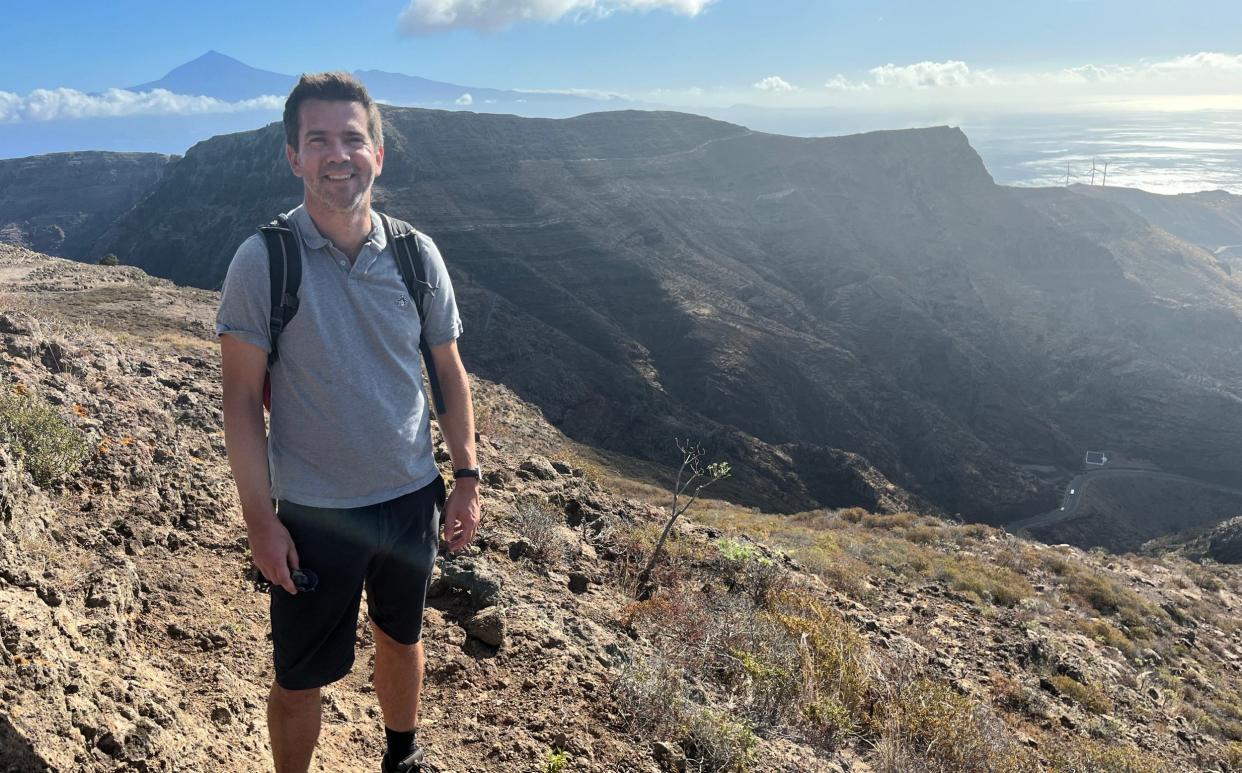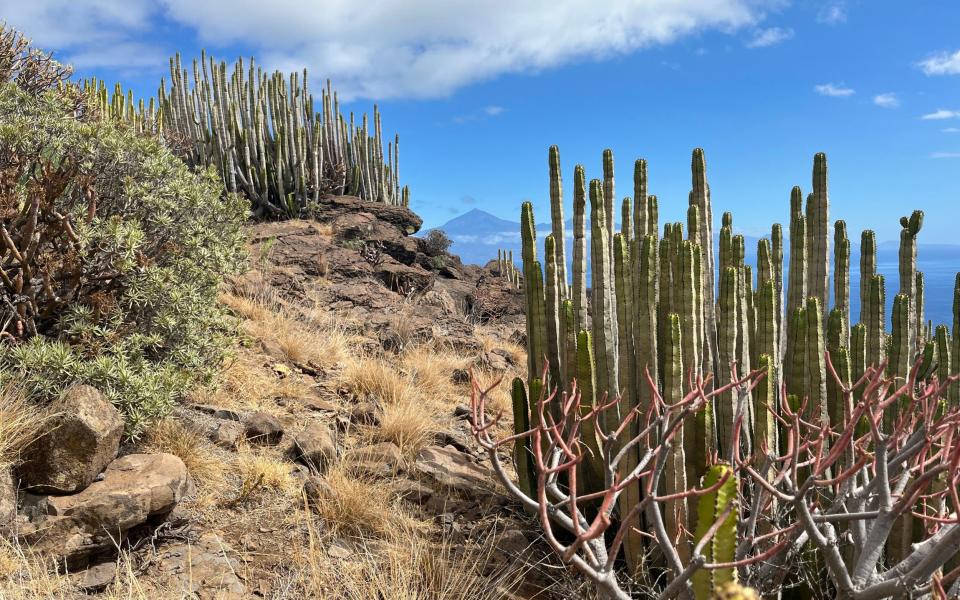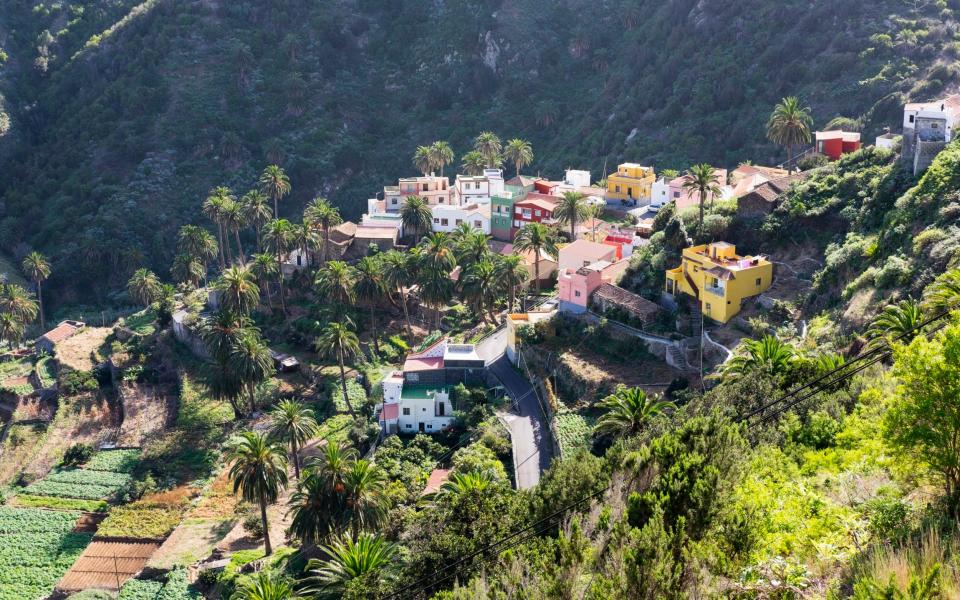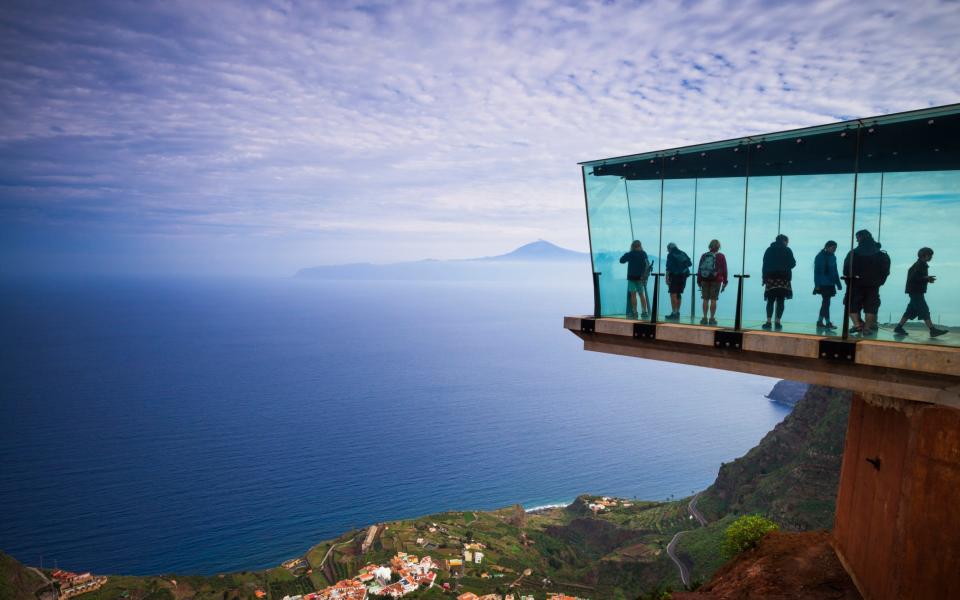I’ve found the perfect Canary Island for midlifers

It’s a cliche that Tenerife is all about mass tourism, with all the cultural complications that often entails. Sure, the stack-’em-high resorts of Los Cristianos and Playa de las Américas on the south coast draw us by the planeload (2.3 million British tourists arrived on the island last year). But even so, a visit doesn’t have to revolve around baking yourself puce or drinking yourself unconscious in the nearest Irish bar, unless you are particularly keen.
Try the boutique hotels and volcanic pools of Garachico on the north coast, for example, or wander the streets of gracious San Cristóbal de La Laguna, a Unesco World Heritage Site. Or explore the epic volcanic mass of Teide, Spain’s highest mountain, its summit a martian landscape of wild red rocks. The teeming hordes rarely venture here.
Better still, next door to Tenerife lies a tiny speck in the ocean called La Gomera. And La Gomera is something very special indeed: the antithesis of everything you might have heard about its bigger, heartier sibling. It’s the third-smallest of the eight Canary Islands (larger only than little-visited El Hierro and the really titchy La Graciosa, which only got upgraded from islet to island in 2018) and although it possesses a runway, there are no direct flights from the UK.
To get here means switching planes in Tenerife or Gran Canaria, or transferring from Tenerife South airport to the harbour at Los Cristianos and taking the ferry on its hour-long journey westwards.

The moment you board that ferry, you will realise you are embarking on a very different sort of holiday from the one that’s happening on the packed beach behind you. For a start, there is no sense of “packed”. Instead, the sparsely occupied vessel will suddenly appear to contain only those who are either (A) local or (B) carefully applying sunscreen, dressed in hiking gear and over the age of 45.
Where we’re going, you see, there are no Irish bars. And not a water park in sight. (The largest “resort town” is low-rise Valle Gran Rey in the south-west, a far less frenetic place than its equivalents on Tenerife.) Instead, La Gomera lures its visitors by delivering extraordinary hiking routes through gloriously crenellated landscapes, all packed into a button-shaped island a mere 15 miles in diameter and with a population of just 22,000. Basically, if you’re after the perfect Canary Island for empty-nest midlifers – at least, those of us with still-functioning knee joints – then this, my twice-blessed friends, is it.

Alejandro, who drove us northwards from the capital San Sebastián – little more than a harbour on the east coast with a few parallels of well-kept streets arrayed behind it – put it best: “In La Gomera, you go up, you go down – and there are a lot of zig-zags.” Thus would our week of walking unfold.
My wife and I, these days entirely empty of nest, had booked ahead with Inntravel, which specialises in “slow holidays” and had arranged all our accommodation, plus the transport of our bags between hotels so we could hike relatively unencumbered. It also provided us with route information (both in print and digital form, for mobile phone use). I will confess that some of the elevation profiles listed in these looked a bit daunting.
First things first, though: we explored the little town of Vallehermoso in the north of the island, which – like almost all the little towns we would eventually pass through – is formed from a puddle of brightly coloured houses that wash gently up the sides of the barranco (valley) floor, before dissolving just shy of a black-sand shoreline. In La Gomera, buildings seem always to be at the mercy of topography: cafés perch on cliff edges, houses hide in ravines.

Hotel Añaterve, our base for the first couple of nights, was in fact more like a cosy B&B. It occupied a lofty position on a small hill, with a view out over the town towards the sea, the riverbed below marked out by bright green bamboo canes and banana-leaf fronds. From the back of the property, a narrow path led into town through a dusty garden of frangipani, pomegranate trees and monstrous agave plants.
We ate splendid tuna fillet and pan con almogrote (bread with a fiery paste made with hard cheese and peppers) at the friendly Restaurante Agana, which turned out to be the only restaurant that was open. Later that night we were lulled to sleep by the bleating of a goat farther up the valley. Amala, one of the co-owners of the hotel, didn’t like the goat; she felt it was too loud. “I wish it was a donkey,” she told me the next morning as she waved us off.
I wished it was a donkey, too, as we made our way up from the valley floor. It could have carried my daypack, which was weighed down with several litres of water (temperatures in La Gomera in spring and autumn are warmly pleasant for hikers, but this is still a strenuous business). The 10-mile circuit we were due to complete took us about 1,600ft above the Barranco de la Era Nueva to the north-west of the town. Beyond we could see the Roque Cano, which looms over Vallehermoso, a huge fist of rock that is the remnant of a volcanic chimney.
There wasn’t a huge amount of way-marking on the route (don’t worry – the walking notes are exemplary), but the paths themselves were impressively well maintained. Of the six people we met that morning, four of them were dressed in hi-vis vests and were hacking away at the undergrowth to clear the way. The other two were a pair of German hikers who were concerned about our relative fitness levels.
“I always check people’s calves to see if they are proper walkers,” said one. “I didn’t rate the calves of some of the other people in the hotel, but yours look OK.”
Suitably encouraged, we marched onwards into the scenery. Our surroundings really were extraordinary, running from laurel tree grove to black volcanic soil in a single switchback, the drier mountainsides spotted with cyprus trees and white-flowered broom, the narrow valleys lined with date palms in more verdant green. Stark, V-shaped views ran jagged across our line of sight as we toiled upwards. Then suddenly we burst out of the valley onto the north-west coast to follow a ridge high above the shore.
After what turned out to be the most strenuous ascent of the week, we made it to Chorros de Epina, where seven springs converge in a row of trickling pipes. According to local legend, men have to drink from the odd-numbered springs and women from the even-numbered ones in order to guarantee true love.

Perhaps over-confident in our relationship, I suggested we skip the pipes and instead eat more pan con almogrote at the Chorros de Epina restaurant, perched on an escarpment. It marked the rough half-way point in our route, before we wound back to Vallehermoso through a pine forest.
You get the gist, then. Every day starts with a climb and takes you either on a circular route, or a direct path to your next accommodation. But that doesn’t cover just how startling individual moments on each trail are.
The journey eastwards from Vallehermoso to the town of Hermigua – the longest of the week at 11 miles – is lanced into my memory because of its sheer variety: the red dust of the path below the Roque Cano; the terraced vines and fruit trees above the almost empty Presa Amalayuigüe reservoir; the extraterrestrial landscape on our detour to the Mirador de Abrante, where red dunes were wreathed in a mist that also – sadly – hid Tenerife from view; the relics of abandoned harbour infrastructure at the pretty village of Agulo, where the banana trade once flourished.
We spent two nights based at the seven-room Hotel Rural Casa los Herrera in Hermigua, which faces the town’s church and is a splendid concoction of dark wood ceilings, neat balconies and crisp white linen. The terrace of Bar Pedro, a little closer to the sea, was the place to be in the evenings, in that the few hikers we’d met along the way seemed to congregate there. We toasted each other’s calves with the local Dorada beer.

The journey back to San Sebastian from Hermigua is a thrill, ending with a three-hour descent that traverses the ridge of Lomo de las Nieves. We passed prickly pears in opal-fruit colours and groves of long-needled Canarian pines; crickets chirped and lizards skittered across the path as we made our way to the Parador Nacional de Turismo de la Gomera, perched above the town. A modern building constructed to resemble a Canarian manor house, it was on a much grander scale than our two previous hotels, but by this point we were due a bit of pampering. From the outdoor pool, Mount Teide shone blue in the far distance, serene above the clouds – and the crowds.
We ventured along the coast for one last walk – a tiddler at two hours each way – this time to an entirely empty black-sand beach that was perfect for swimming, before heading down into town for lunch. And it was here that we found a life-sized statue of Christopher Columbus, whose fleet stopped off at La Gomera in 1492 to stock up with provisions before heading to the New World. He was 41 at the time: almost the perfect age. I just hope he remembered his hiking boots.
Essentials
Ben Ross travelled as a guest of Inntravel (01653 617000; inntravel.co.uk), which offers a seven-night walking holiday on La Gomera from £1,100pp based on two sharing, including B&B accommodation, two dinners, two picnics, ferries and transfers, and walking notes and maps. Flights extra. Available until May 31 and from September 1 to January 7 2025.
Recommended
There is a secret side to Tenerife that most visitors are blissfully unaware of

